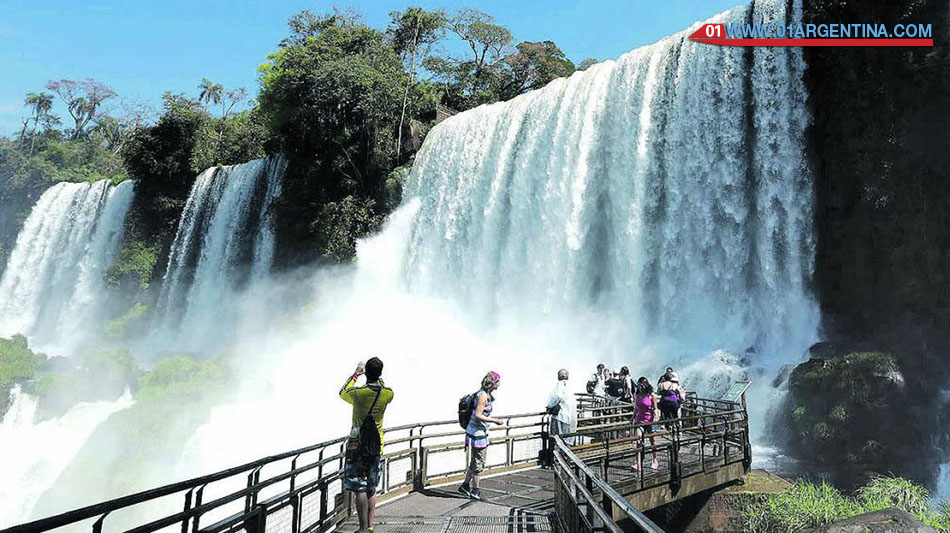 From its sources at the summit of the Serra do Mar, beyond Curitiba (Brazil), the Iguazu River flows in a distance of about 500 km, receiving water from its many tributaries.
From its sources at the summit of the Serra do Mar, beyond Curitiba (Brazil), the Iguazu River flows in a distance of about 500 km, receiving water from its many tributaries.
In its upper course, before precipitating by the Iguazu Falls, it has a width of between 500 and 1,500 meters, running through its low coasts.
Next to the fall of the waters this channel is subdivided by numerous islands and islets, that originate a series of arms of the river, that when arriving at the difference of 74 meters of height, give rise to the jumps whose number varies according to the flow of Water.
The Iguazu Falls hike reaches a length of 2,700 meters, of which 2000 are on the Argentine side of the river.
After saving the gigantic step, the inferior Iguazú river, whose width is reduced to about 80 meters, runs through the high ravines. etc.
As the force of water slowly wears away the material from the river bed, the basaltic walls forming the Iguazu Falls fracture and fall at the foot of the water columns, where they are fragmented and removed.
This process, which continues, has caused that since its origin, about 100,000 years ago, the Iguazu Falls have receded about 23 km, since they were initially at the point called “Three Fronteras”, place where the Iguazú river drains in The Paraná River.
The Iguazu National Park and the Iguazú National Reserve (one of the first protected areas of America, declared a World Natural Heritage Site by UNESCO in 1984).
They are located in the Northwest of the Province of Misiones and occupy an area of 67,000 hectares.
Its objective is to preserve a sample of the subtropical forest and protect the majestic Iguazú Falls.
This jungle biome is undoubtedly one of the richest natural environments in Argentina.
It houses around 2,000 known species of plants, one third of the total of Argentine bird species and innumerable insects.
The warm climate in general presents an average temperature of 15º C for June and July, and of 25ºC for December and January.
The winds from the Atlantic cause rains of around 2,000 millimeters per year and relative humidity ranges from 75 to 90%.
While the Iguazu National Park preserves nature and natural processes in the least altered way possible, the reserve admits human activities and infrastructure.
In the National Park you can make numerous walks, which will allow you to enjoy both the important scenic beauty of the Iguazu Falls and the exuberant missionary jungle.
Important recommendations before traveling to Iguazu
On full moon nights, guided hikes by park rangers take place on the upper walks. Schedules appear on the billboard of the visitor center.
Each visitor is responsible for the protection of the environment.
By following and recommending to others these conservation practices, we are helping to preserve these treasures for the generations to come.
If you enter with a vehicle, respect the speed limits, remember that there lives a varied wildlife, which can cross your path. European Hare
▶ Do not feed wild animals, even if they look friendly they can be aggressive.
▶ Carry the trash you carry, until you find a basket to throw it.
▶ Remember that it is not allowed to remove any kind of plant from the Park. Just take good photos and better memories.
▶ For your safety do not cross the guardrails. Stay on the paths.
▶ Carry mosquito repellent and fresh clothing. To walk on the jungle paths it is advisable to wear long trousers.










